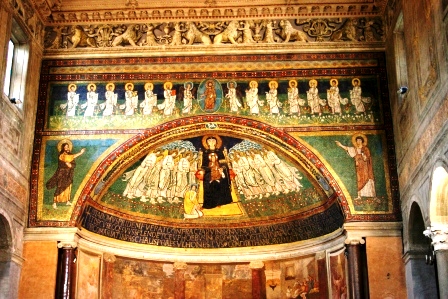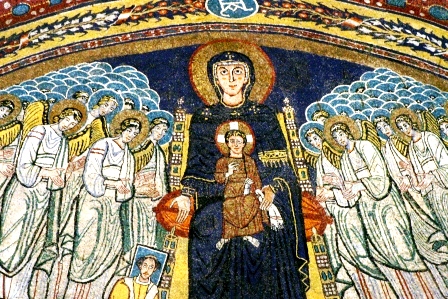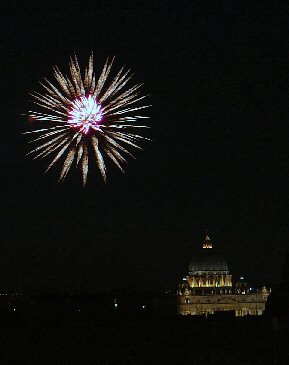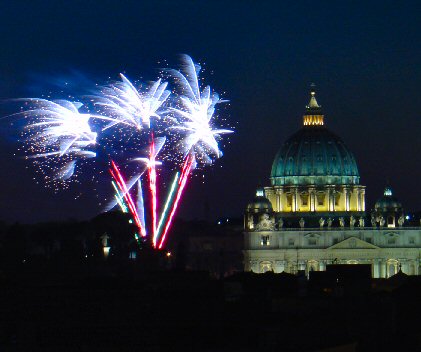The Holy Father’s Message for Lent was released today. I was at the Press conference with S.E. Mons. Paul Josef Cordes, President of the Pontifical Council "Cor Unum", who made the presentation along with others.
The document was signed on 21 November 2006. It is very short. It constitutes quite a break with Messages of the past. This message is strongly theological, providing starting points. Messages in the past were strong practical, exploring themes like “Marginalization of the Poor” (1977) and “World Hunger” (1996). This time he is much more explicitly theocentric, returning to the fundamental building block of Deus caritas est. Cordes said that he could only speculate why the Holy Father has changed the style of the Lenten message.
Cordes, in his comments, seemed to desire to bring the discussion away from the theological dimension and right away pass to the concrete exercise of charity. In a way I had the sense that he wanted to talk about something other than the message. To accomplish this they enlisted the help of an old Italian priest Fr. Oreste Benzi, founder of the “Pope John XXIII” houses which work for the marginalized. Benizi gave a sustained fervorino (over a half hour). His experience working with the very difficult cases life can reveal reminded me that there are those who service the Church at a desk and those who serve at a gutter or a bedside.
Benizi, clearly a man who has zealous love for the poor pretty bluntly said that there should be no restraints on immigration and everyone should be given a job. I am not sure how that it is be done… perhaps some "redistribution of wealth"? Anyway, the guy had real fervor. One very insightful comment he made concerned the late and the present Holy Father and how they are seen by young people. Benizi said young people are not just following or “running after” the singer, but also after the song. This about the reaction that young people are having for Pope Benedict XVI in light of the great popularity of the late Pope John Paul II. In other words after the great cult of person that surrounded the late Pope people are very much on fire to hear what Pope Benedict has to say.
Back to the Message.
The first paragraph presents the major theme, “They shall look on Him whom they have pierced." This is strongly reminiscent of the title of a book Joseph Ratzinger published years ago: Behold The Pierced One. It also calls to mind how the late Holy Father called us to direct our gaze, through Mary with the Rosary, to Christ’s face.
The Pope in the Message returned to the theme he addressed in Deus caritas est, that is, of agape and eros.
He starts with Biblical texts and moves to Patristic texts as well as the Neo-platonic Christian writer Pseudo-Dionysius. The letter is strongly Patristic. Cited are St. Maximus Confessor (Ambigua 91, 1956), and St. John Chrysostom (Catecheses 3,14 ff) on how the water and Blood from the side of Christ are symbols of the sacraments of Baptism (water) and Eucharist (Blood). The Pope quotes a certain N. Cabasilas. I am not sure who he is right at the moment.
You can read the thing yourself pretty quickly, and I advise you to do so. I will only point out a couple things I found immediately interesting.
The Pope returned to a Ratzingerian theme of self-sufficiency. I find this often in the Pope’s writings. In the Message he wrote:
“Unfortunately, from its very origins, mankind, seduced by the lies of the Evil One, rejected God’s love in the illusion of self-sufficiency that is impossible (cf. Gn 3:1-7). Turning in on himself, Adam withdrew from that source of life who is God Himself, and became the first of “those who through fear of death were subjected to lifelong bondage” (Heb 2:15). God, however, did not give up. On the contrary, man’s “no” was the decisive impulse that moved Him to manifest His love in all of its redeeming strength.” Also in the message: “We need to respond to such love and dedicate ourselves to communicating it to others. Christ “draws me to Himself” in order to unite Himself to me, so that I learn to love the brothers with His love.”
The reference to "fear of death" is not only biblical, it is greatly expanded on by St. Augustine of Hippo, whom the Pope has long studied.
Here is a nice point for those who are married. It reminds me of something I would stress in marriage prep:
“In all truth, only the love that unites the free gift of self with the impassioned desire for reciprocity instills a joy, which lightens the greatest sacrifices.” In this phrase we have the union of agape (gift of self) and eros (impassioned desire).
"Looking on Him whom they have pierced" will help us to see people with greater respect, recognizing the wounds inflicted on humanity, but also to “alleviate the tragedies of loneliness and abandonment of so many people.” This redirection of our gaze to the Crucified Christ should bring us to concrete acts of love toward neighbor are, as the Holy Father puts it, “Only in this way shall we be able to participate fully in the joy of Easter.”
H.E. Cordes can back strongly to the idea that in this Message it is not being suggest that service of God substitute the service of man. He tried to emphasize that there is a balance needed between them. The one should be made more authentic by the other. This is also a theme of Deus caritas est.







 In Dialogues 4.12, the Pope and Doctor wrote…
In Dialogues 4.12, the Pope and Doctor wrote… Today is the feast of Sts. Saturninus and companions who died in North Africa in 304.
Today is the feast of Sts. Saturninus and companions who died in North Africa in 304.



 Here is the story (my emphasis):
Here is the story (my emphasis):  In the
In the 































